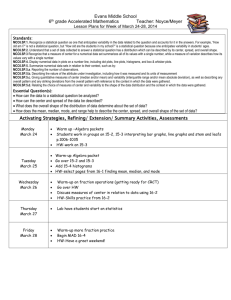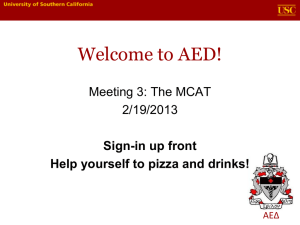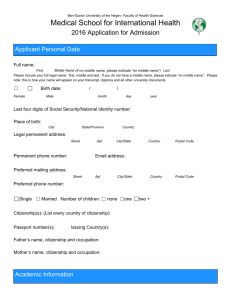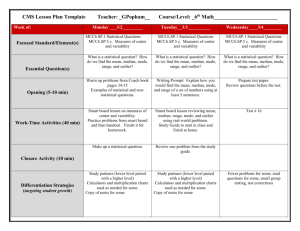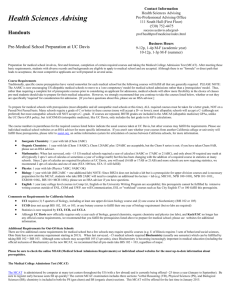Data and Integers Review Gr.6
advertisement
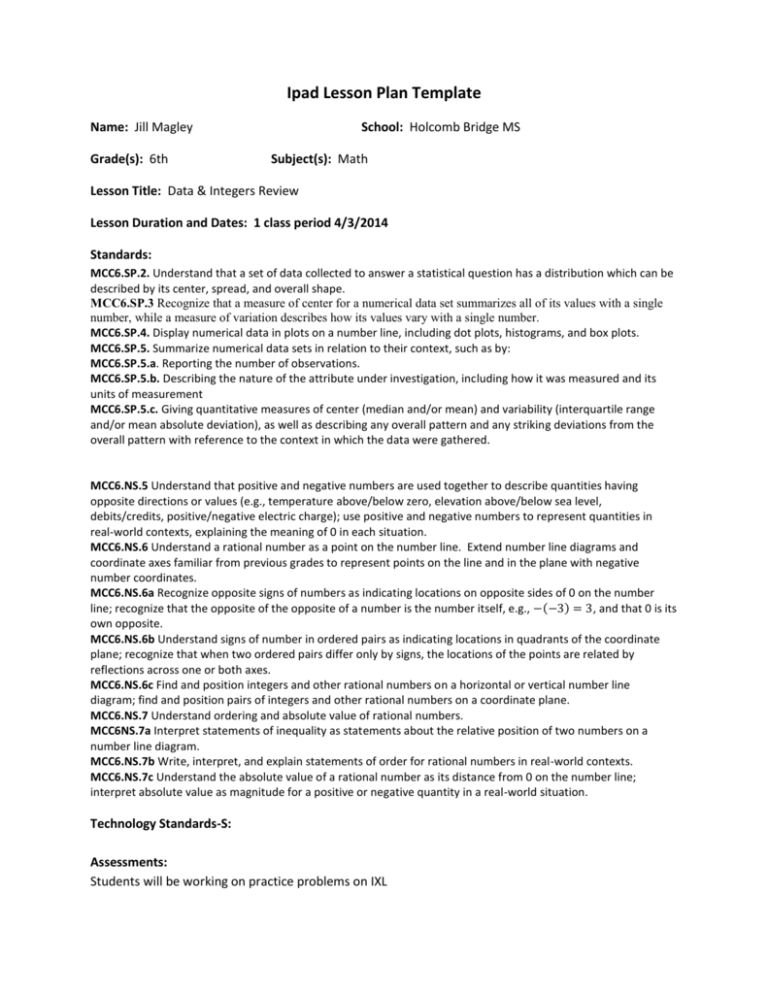
Ipad Lesson Plan Template Name: Jill Magley Grade(s): 6th School: Holcomb Bridge MS Subject(s): Math Lesson Title: Data & Integers Review Lesson Duration and Dates: 1 class period 4/3/2014 Standards: MCC6.SP.2. Understand that a set of data collected to answer a statistical question has a distribution which can be described by its center, spread, and overall shape. MCC6.SP.3 Recognize that a measure of center for a numerical data set summarizes all of its values with a single number, while a measure of variation describes how its values vary with a single number. MCC6.SP.4. Display numerical data in plots on a number line, including dot plots, histograms, and box plots. MCC6.SP.5. Summarize numerical data sets in relation to their context, such as by: MCC6.SP.5.a. Reporting the number of observations. MCC6.SP.5.b. Describing the nature of the attribute under investigation, including how it was measured and its units of measurement MCC6.SP.5.c. Giving quantitative measures of center (median and/or mean) and variability (interquartile range and/or mean absolute deviation), as well as describing any overall pattern and any striking deviations from the overall pattern with reference to the context in which the data were gathered. MCC6.NS.5 Understand that positive and negative numbers are used together to describe quantities having opposite directions or values (e.g., temperature above/below zero, elevation above/below sea level, debits/credits, positive/negative electric charge); use positive and negative numbers to represent quantities in real-world contexts, explaining the meaning of 0 in each situation. MCC6.NS.6 Understand a rational number as a point on the number line. Extend number line diagrams and coordinate axes familiar from previous grades to represent points on the line and in the plane with negative number coordinates. MCC6.NS.6a Recognize opposite signs of numbers as indicating locations on opposite sides of 0 on the number line; recognize that the opposite of the opposite of a number is the number itself, e.g., −(−3) = 3, and that 0 is its own opposite. MCC6.NS.6b Understand signs of number in ordered pairs as indicating locations in quadrants of the coordinate plane; recognize that when two ordered pairs differ only by signs, the locations of the points are related by reflections across one or both axes. MCC6.NS.6c Find and position integers and other rational numbers on a horizontal or vertical number line diagram; find and position pairs of integers and other rational numbers on a coordinate plane. MCC6.NS.7 Understand ordering and absolute value of rational numbers. MCC6NS.7a Interpret statements of inequality as statements about the relative position of two numbers on a number line diagram. MCC6.NS.7b Write, interpret, and explain statements of order for rational numbers in real-world contexts. MCC6.NS.7c Understand the absolute value of a rational number as its distance from 0 on the number line; interpret absolute value as magnitude for a positive or negative quantity in a real-world situation. Technology Standards-S: Assessments: Students will be working on practice problems on IXL Lesson description: We will be giving our Unit 6 & 7 test on Friday so this will give students the chance to practice areas that they still do not feel prepared for. Lesson directions, materials and procedures: Students will be given their own iPad as well as a list of topics for things they can practice on IXL. Differentiation(s): Students will be given different lists of topics to choose from based on the areas that they need more practice. Technologies Used: List specific web sites or apps to be used: IXL.com Where was technology used in the lesson? ☐ Pre-planning ☐ Research / Investigation ☐ Knowledge Construction / Making Meaning ☐ Final Product Development – Media Making ☐ Assessment ☐ Reflection / Feedback Final Reflection: What advice would you give yourself or other teachers to increase the quality of student work for this lesson the next time it is used?
